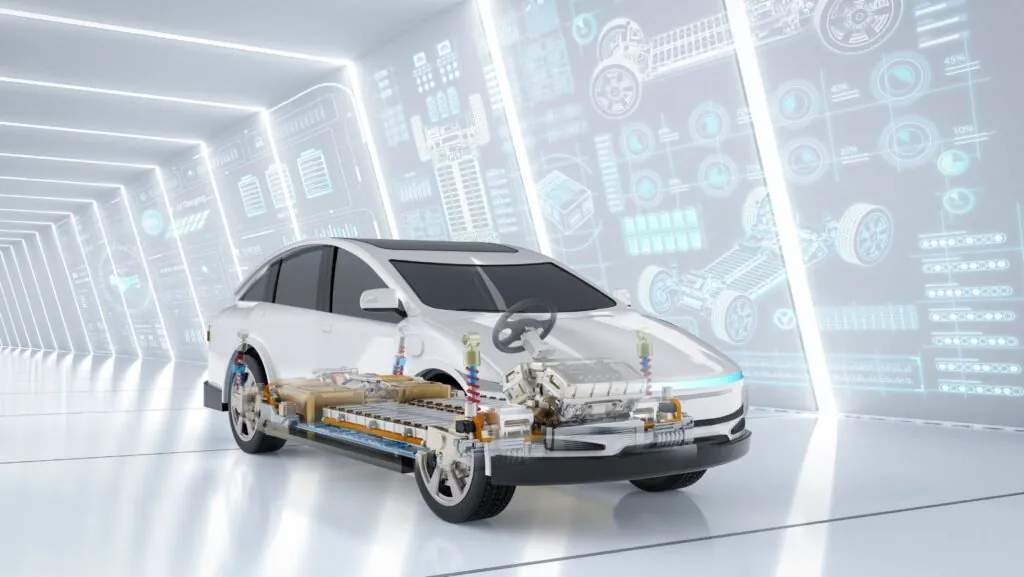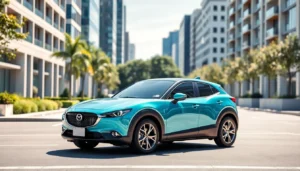Imagine gliding down the road with the wind in your hair and zero guilt about your carbon footprint. Enter eDrive, the game-changer in the world of electric mobility. It’s not just about getting from point A to point B; it’s about doing it with style and a sprinkle of eco-friendly magic.
Overview of eDrive
eDrive represents a significant advancement in the electric mobility sector. This technology transforms traditional transportation methods into an eco-friendly experience. Environmentally conscious individuals benefit from reduced carbon emissions during their travels. Vehicles utilizing eDrive offer impressive ranges, combining performance with sustainability.
Designed for urban commuting, eDrive vehicles prioritize efficiency and practicality. Charging infrastructure continues to expand, ensuring convenience for users. Speed and acceleration rival that of conventional vehicles, appealing to a broad audience. Various models cater to diverse needs, including compact city cars and family-friendly options.
Safety features in eDrive vehicles integrate cutting-edge technology, enhancing overall driving experience. Regenerative braking systems recapture energy while slowing down, thus improving efficiency. These elements align with growing trends toward greener alternatives in personal transportation.
User feedback consistently highlights satisfaction with eDrive’s seamless integration into daily routines. Cost savings on fuel and maintenance enhance its appeal, making it a smart choice for budget-conscious consumers. As manufacturers invest in research and development, future advancements promise even greater benefits.
Vehicle design also promotes a contemporary aesthetic, attracting those who value style alongside functionality. Interior comfort and advanced connectivity features further elevate eDrive vehicles. Owners appreciate the balance of eco-friendliness and modern conveniences, ensuring a gratifying journey every time.
Advantages of eDrive
eDrive offers multiple benefits that enhance the overall experience of electric mobility. Notably, these advantages improve both efficiency and performance, supporting eco-friendly travel.
Enhanced Energy Efficiency
Energy efficiency ranks high among eDrive’s advantages, making it a crucial factor for users. Vehicles equipped with this technology utilize advanced battery systems that maximize energy conversion. By recapturing energy through regenerative braking, they transform kinetic energy back into usable power. Reduced energy consumption significantly extends the driving range, allowing users to travel longer distances on a single charge. Such improvements align well with growing environmental concerns, showcasing eDrive as a smart alternative to traditional vehicles. Overall, this efficiency results in lower operating costs, benefiting both consumers and the planet.
Improved Performance
Performance stands out as another critical advantage of eDrive technology. Enhanced acceleration capabilities contribute to a spirited driving experience, often rivaling that of gasoline-powered vehicles. eDrive vehicles generally feature strong torque delivery, ensuring quick responsiveness in various driving conditions. Models within this category boast impressive top speeds, appealing to a wide range of drivers. Transitioning from urban settings to highways becomes seamless, offering versatility for diverse travel needs. Additionally, lightweight materials and innovative designs enhance maneuverability, further elevating the driving experience. These performance benefits solidify eDrive’s position as a leader in modern transportation.
Key Features of eDrive
eDrive showcases various innovative features that enhance the driving experience while promoting sustainability. These attributes make eDrive a standout choice in the electric vehicle landscape.
Regenerative Braking
Regenerative braking represents a significant advancement in energy efficiency. This system captures kinetic energy during deceleration, converting it back into usable electricity. Users experience improved battery performance due to this energy recapture. By integrating this technology, eDrive extends the driving range and optimizes energy consumption. Increasingly, drivers appreciate lower operating costs thanks to this feature. Improved efficiency directly impacts environmental sustainability, making eDrive vehicles a responsible choice. With regenerative braking, urban commuters enjoy enhanced driving efficiency and reduced reliance on charging.
Smart Technology Integration
Smart technology integration enhances the overall driving experience for eDrive users. Advanced connectivity features facilitate seamless interaction between the vehicle and smartphones. Drivers access real-time information, including navigation updates and vehicle diagnostics, all from their devices. Furthermore, artificial intelligence in eDrive systems aids in optimizing performance based on driving habits. Improved user interfaces allow for effortless control of essential functions. Safety benefits arise from smart technology, providing features like collision detection and adaptive cruise control. Enhanced convenience and safety create a more enjoyable and secure driving experience. Optimized systems cater to modern drivers as eDrive continues to innovate in safety and connectivity.
Comparison with Traditional Drivetrains
eDrive systems exhibit several advantages over traditional drivetrains in various aspects. Efficiency stands out, as electric vehicles utilizing eDrive consume less energy compared to internal combustion engines. Studies indicate that eDrive vehicles can convert over 90% of electrical energy from batteries into movement, whereas gasoline engines only achieve about 20% efficiency.
Performance characteristics also reveal significant differences. eDrive vehicles provide strong torque delivery right from a standstill, enabling rapid acceleration. Traditional engines often require high RPMs to achieve peak power, making electric systems more responsive in real-world driving situations.
Maintenance requirements differ considerably. eDrive systems typically have fewer moving parts, translating to lower maintenance costs and reduced frequency of repairs. Drivers enjoy a simplified ownership experience without the need for oil changes or complex exhaust systems prevalent in gasoline vehicles.
Environmental impact adds another dimension to this comparison. eDrive vehicles produce zero tailpipe emissions, contributing significantly to cleaner urban air quality. Traditional vehicles emit harmful pollutants, negatively affecting the environment and public health.
Charging practices reflect modern consumer behavior as well. eDrive users access a growing network of charging stations, facilitating seamless travel. Traditional vehicles depend on fuel stations, which may not always be readily accessible, particularly in remote areas.
Overall, the choice between eDrive and traditional drivetrains hinges on efficiency, performance, maintenance, environmental considerations, and convenience. eDrive clearly leads in meeting the demands of contemporary drivers who prioritize sustainability and cutting-edge technology.
Future of eDrive Technology
Innovations in eDrive technology promise to reshape the landscape of electric mobility. Companies are investing in solid-state batteries, which offer enhanced energy density and faster charging times compared to traditional lithium-ion solutions. Integrating artificial intelligence improves driving efficiency by adapting to user habits, further enhancing the overall experience.
Advancements in charging infrastructure play a crucial role in the broader adoption of eDrive vehicles. The current goal includes establishing ultra-fast charging stations that can deliver significant power in minimal time, making long-distance travel more feasible. Vehicle-to-grid technology provides opportunities for users to contribute to energy supply, allowing eDrive vehicles to become part of the energy ecosystem.
Collaboration among automakers, technology companies, and governments drives future developments. Partnerships focus on creating seamless connectivity between devices and vehicles, elevating the driving experience through real-time data sharing. Security enhancements, such as advanced encryption methods, safeguard against potential cyber threats, ensuring user confidence.
Enhanced materials developed for eDrive vehicles further improve performance and aesthetics. Light-weight composites result in better energy efficiency and handling, directly impacting range and acceleration capabilities. Designs cater to consumer demands for style without compromising practicality.
Sustainability remains a crucial element in the evolution of eDrive technology. Recycling initiatives for batteries and vehicle components become increasingly important as eDrive gains market share. Regulations targeting emissions push automakers to innovate, ensuring that eDrive continues to lead in environmental practices.
EDrive technology is on the brink of significant advancements, with a stronger focus on energy efficiency, user experience, and sustainability shaping its future direction.
eDrive is reshaping the landscape of modern transportation by merging sustainability with performance. As technology advances and charging infrastructure expands, the appeal of eDrive vehicles continues to grow. They not only provide an eco-friendly alternative but also deliver impressive efficiency and driving pleasure. With a focus on innovation and user experience, eDrive stands as a testament to the future of electric mobility. Embracing eDrive means choosing a smarter and greener way to travel, aligning personal needs with environmental responsibility. The journey toward a sustainable future is well underway, and eDrive is leading the charge.






